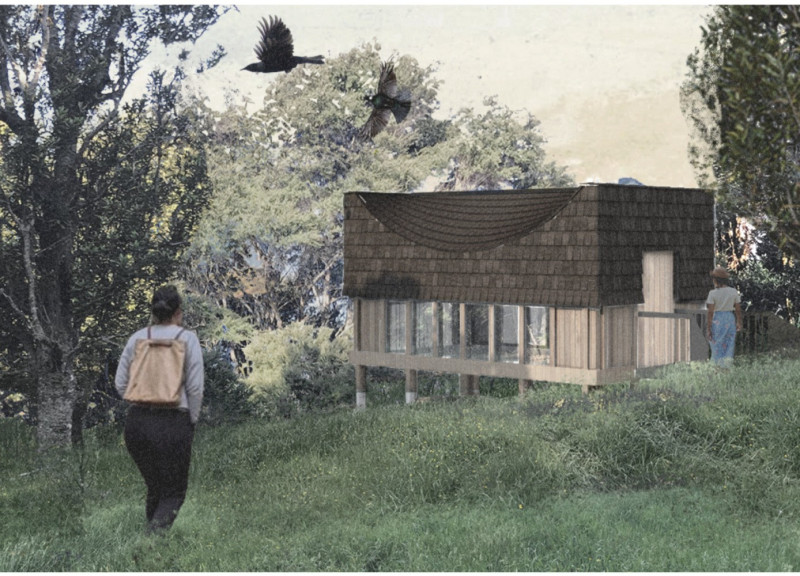5 key facts about this project
The Bush Sanctuary is located within a peaceful native bush landscape, designed as a retreat that encourages a strong connection with nature. Visitors are guided along a pathway defined by carefully chosen forest plants, leading them toward a central area called the “circle of trees.” The overall design promotes calmness and reflection, with the cabin acting as a central point of interest within this tranquil setting.
Design Concept
The main idea behind the Bush Sanctuary is to blend the building with its surroundings. The cabin features a curved, draped roof that reflects the natural cycles of the sun and moon. This design choice not only provides shelter but also connects the structure to the environment, creating a setting that is calming and inviting for users.
Space and Layout
Inside the cabin, the space is open and flexible, allowing for various activities throughout the day. The layout is designed to cater to different needs. Triangular panels placed within the space follow the roof’s curve, adding a sculptural element to the interior while improving the sense of openness and light.
Materiality
The choice of materials highlights a commitment to sustainability. Charred timber shingles cover both the roof and the upper walls, giving the building a natural look that fits well in the woods. Additionally, exposed hempcrete is used for its ability to hold thermal energy. This creates a balanced indoor climate while also being gentle on the environment.
Light and Orientation
Attention to how light enters the cabin plays a key role in the overall design. The building is oriented to receive direct sunlight in the morning, while the afternoons bring soft, diffused light. This thoughtful arrangement allows for different experiences inside, supporting activities such as meditation and flower processing comfortably.
The cabin also features low windows that frame views of the surrounding forest. This design element draws occupants into the landscape and reinforces a sense of calm throughout the space.























































